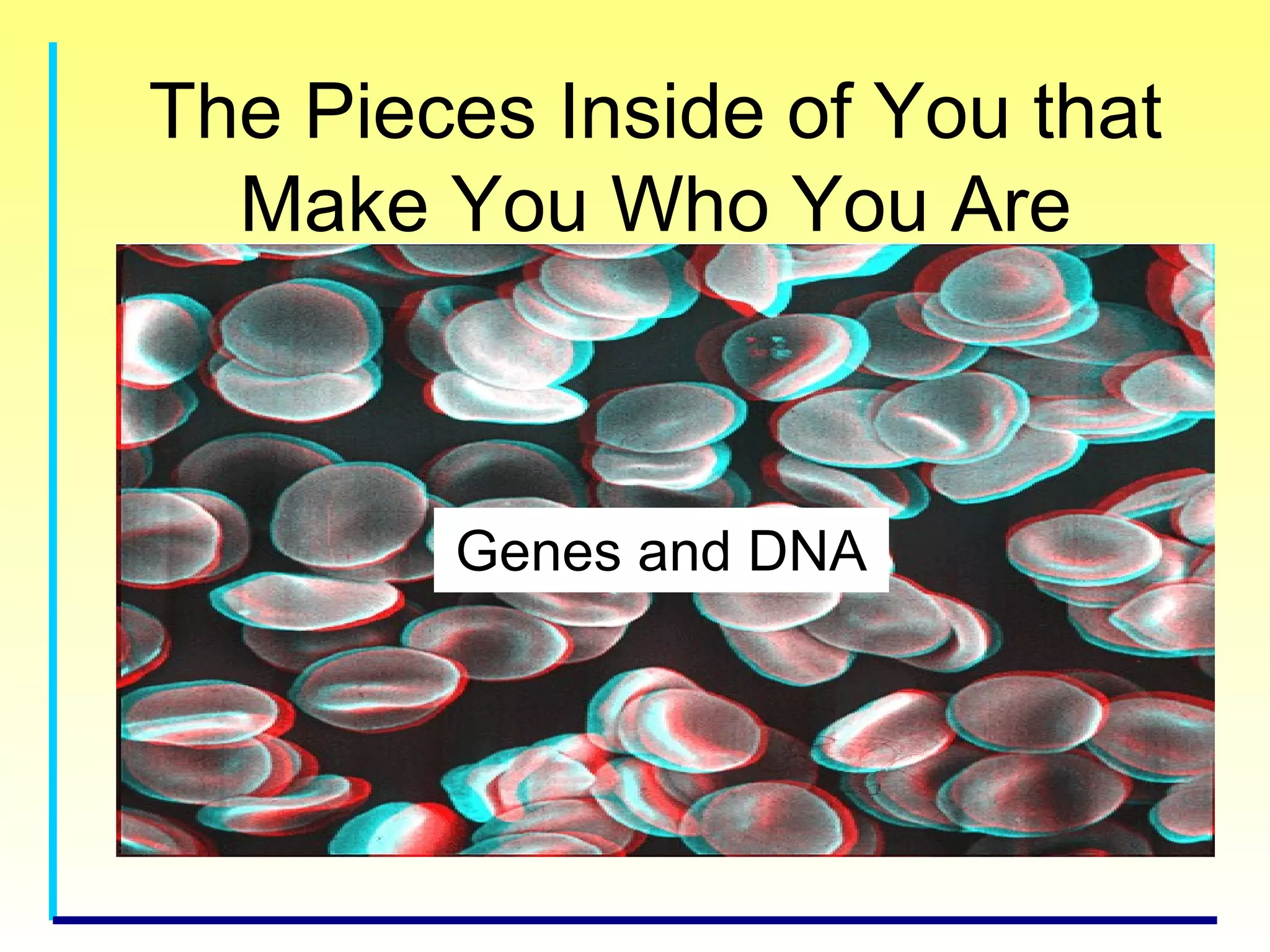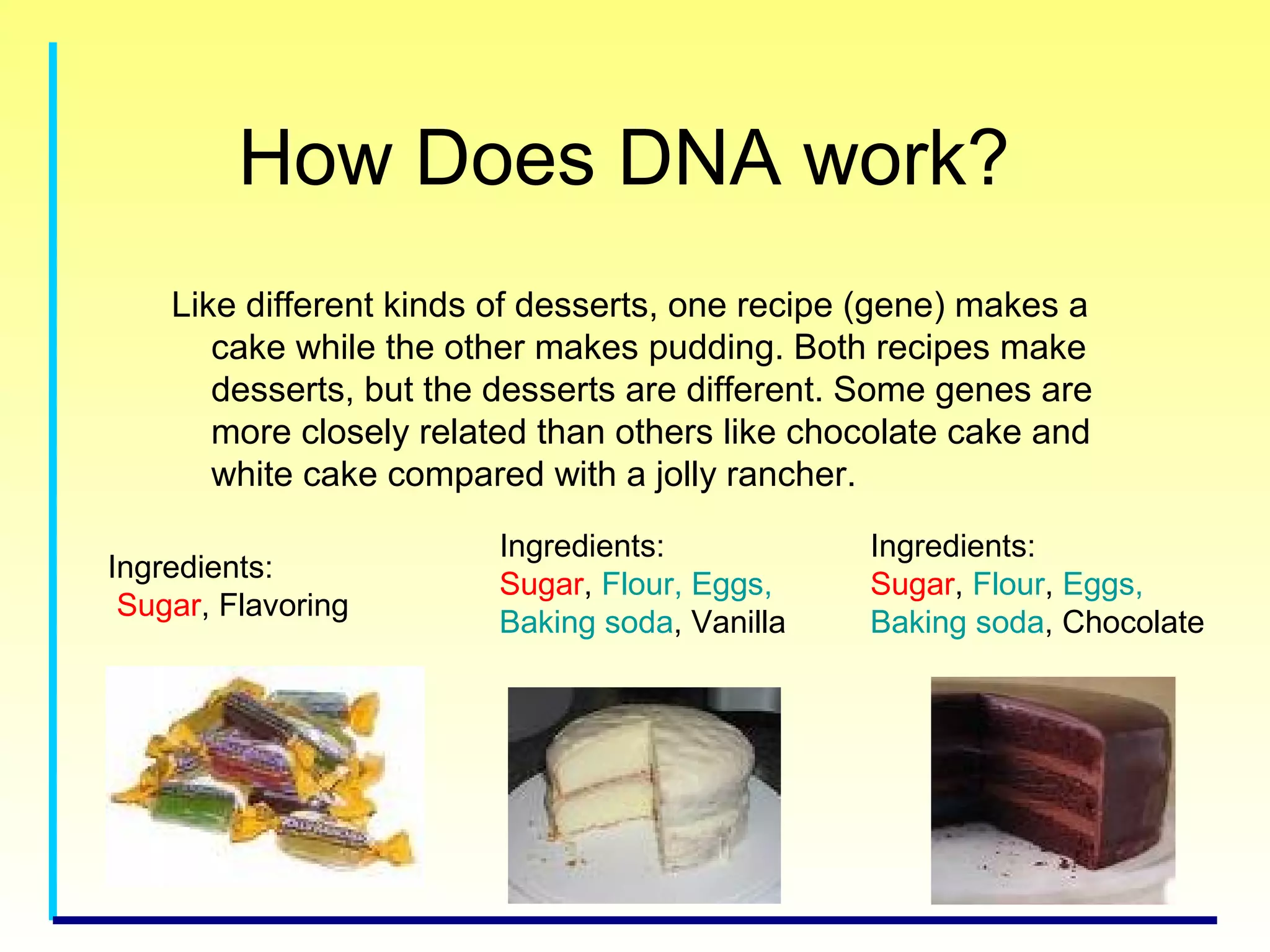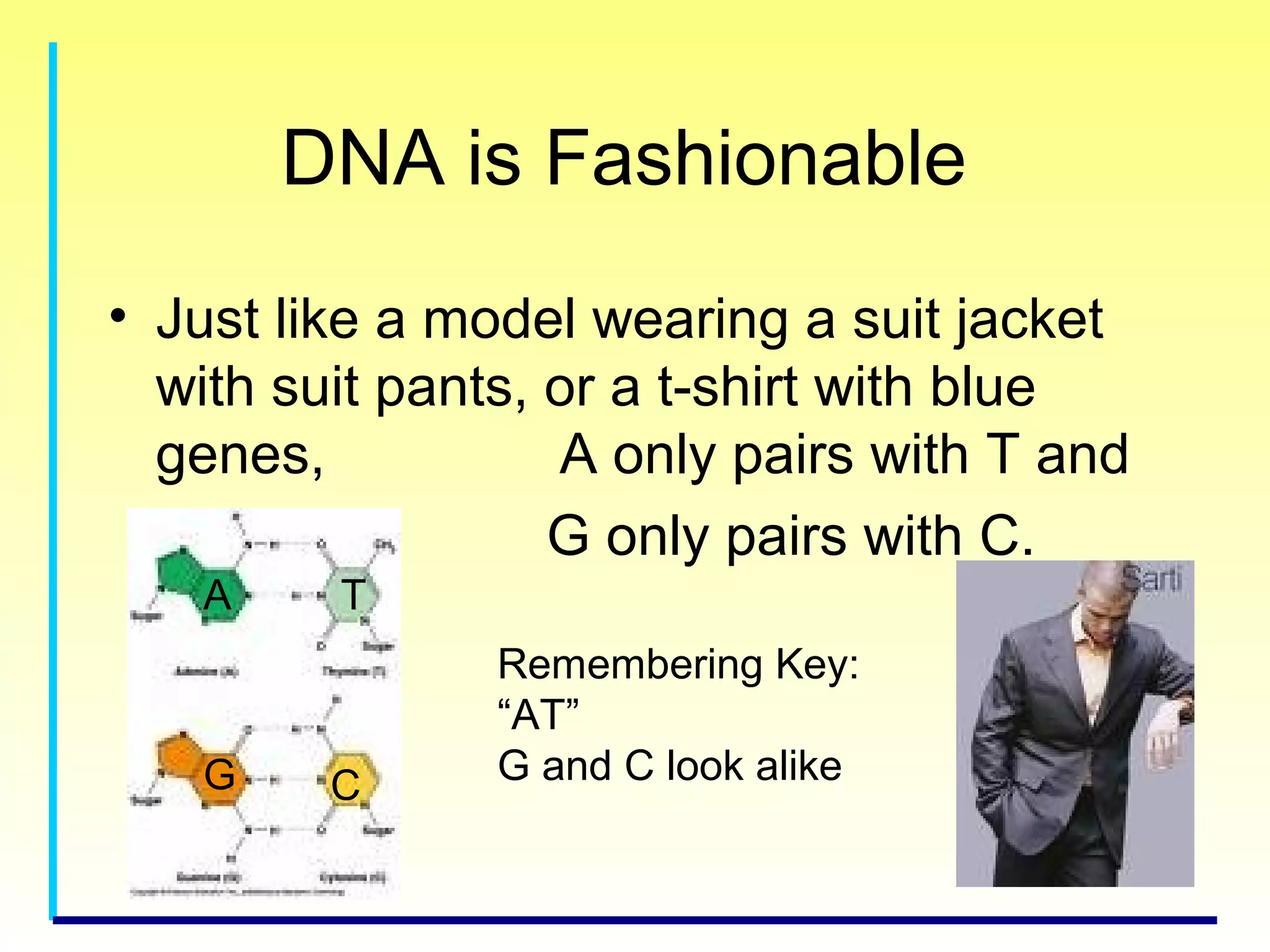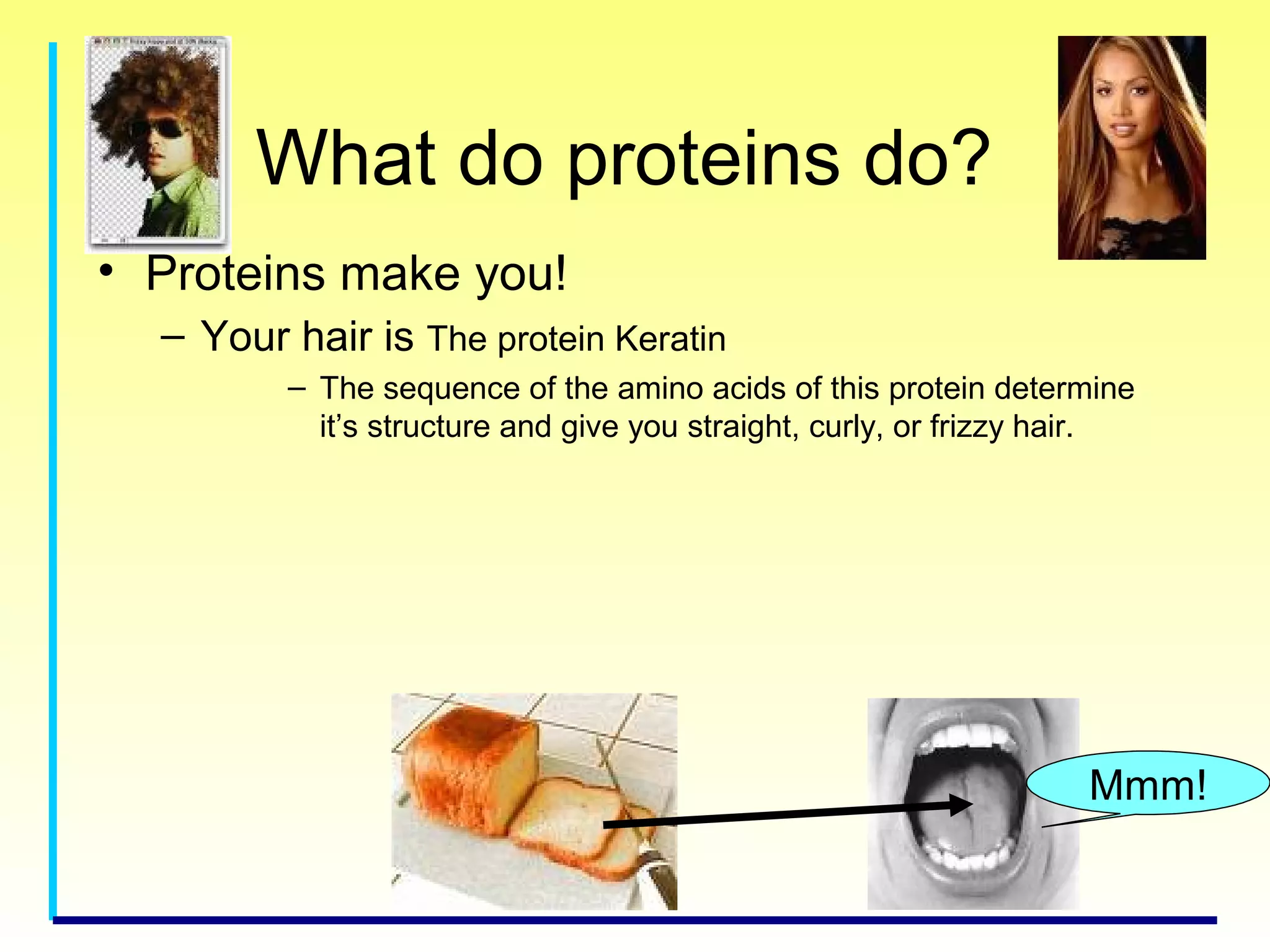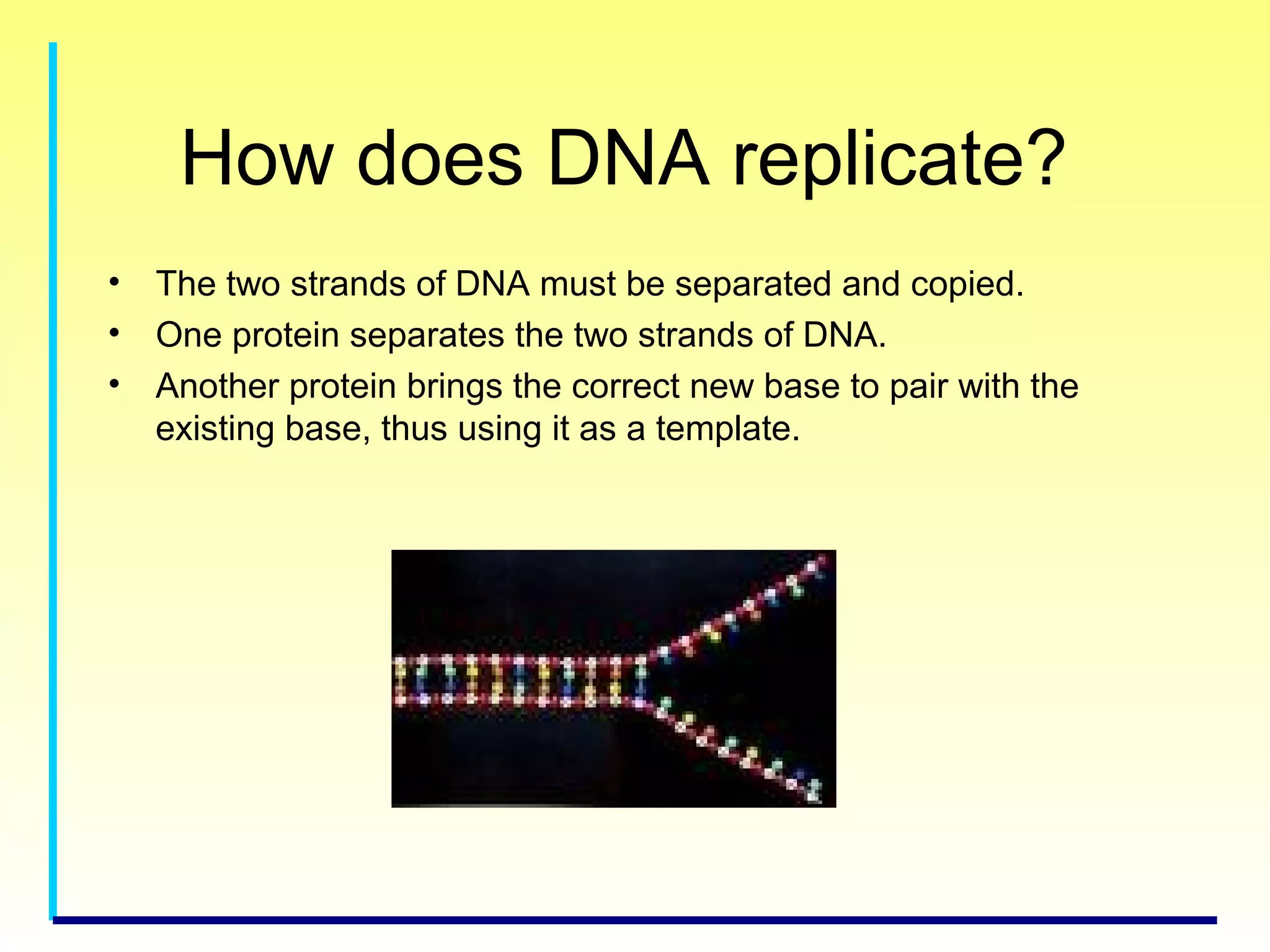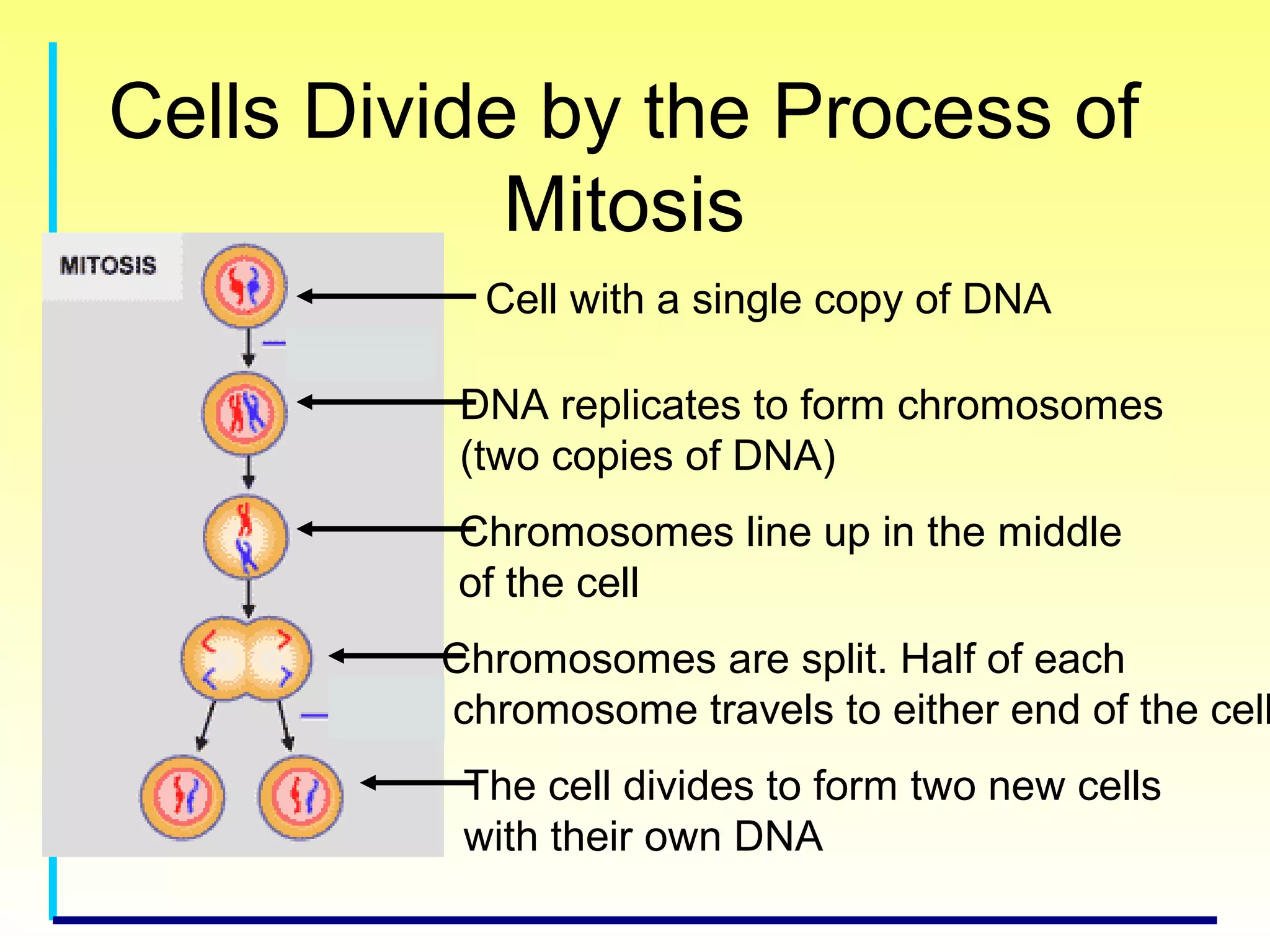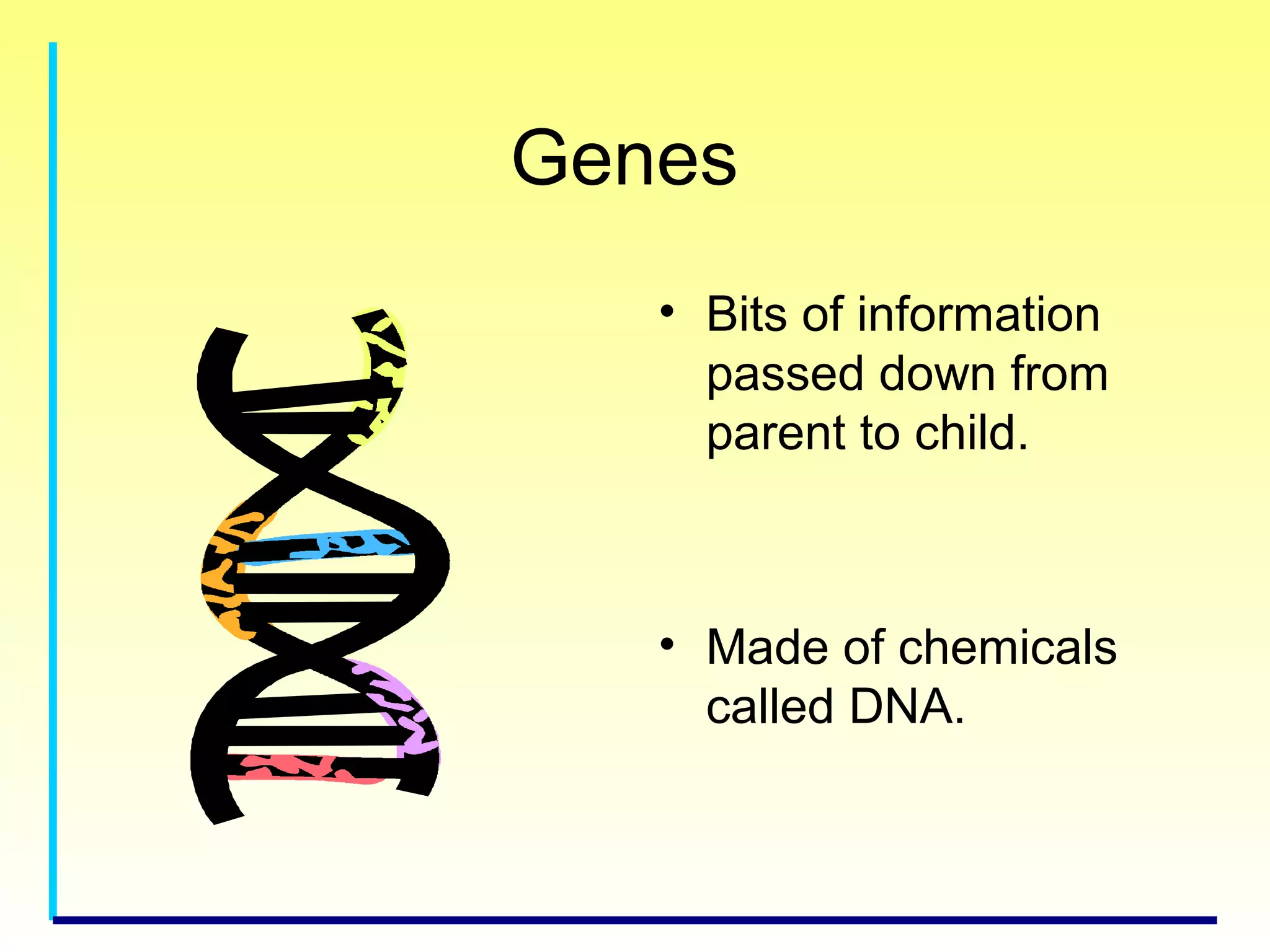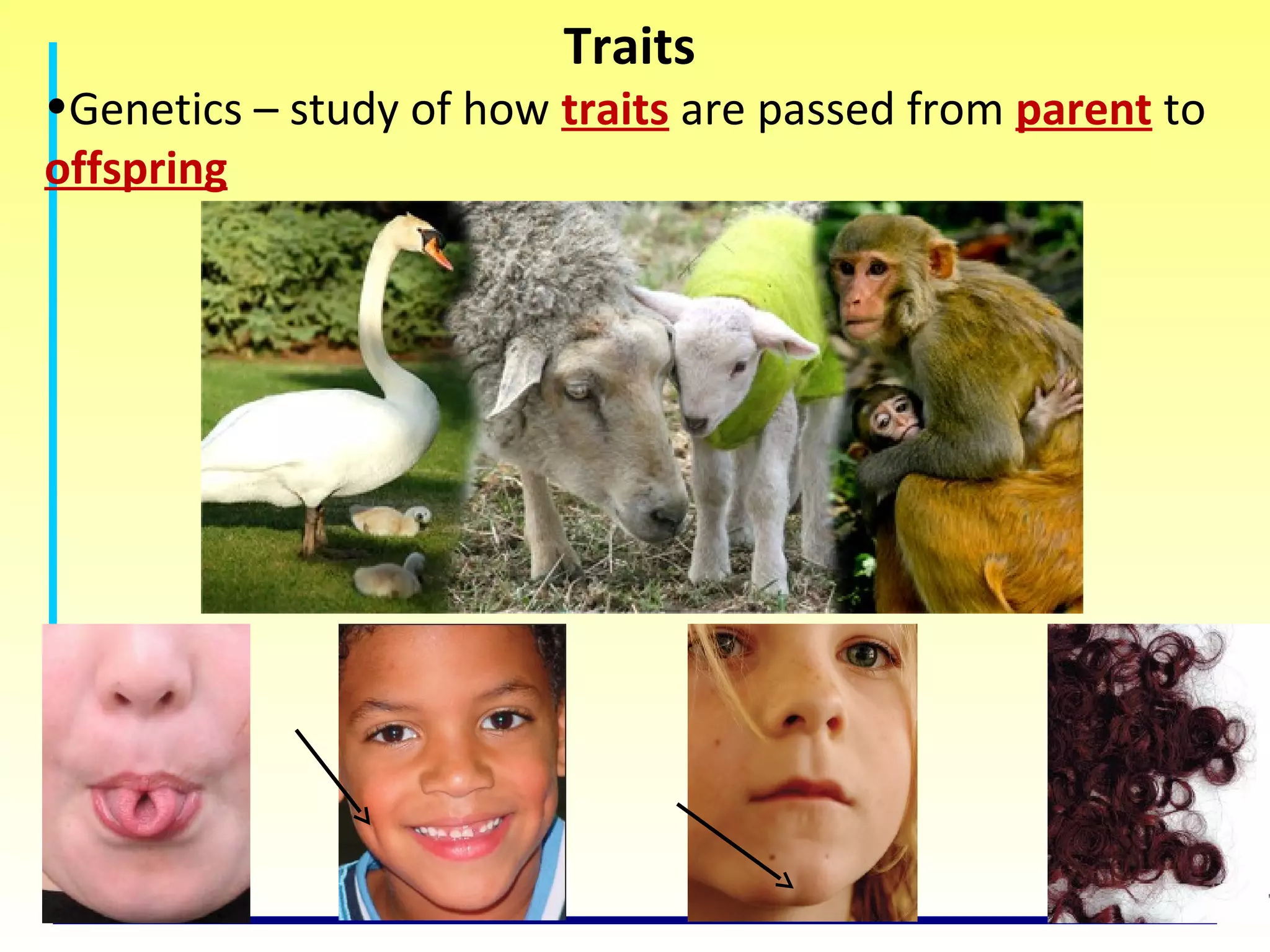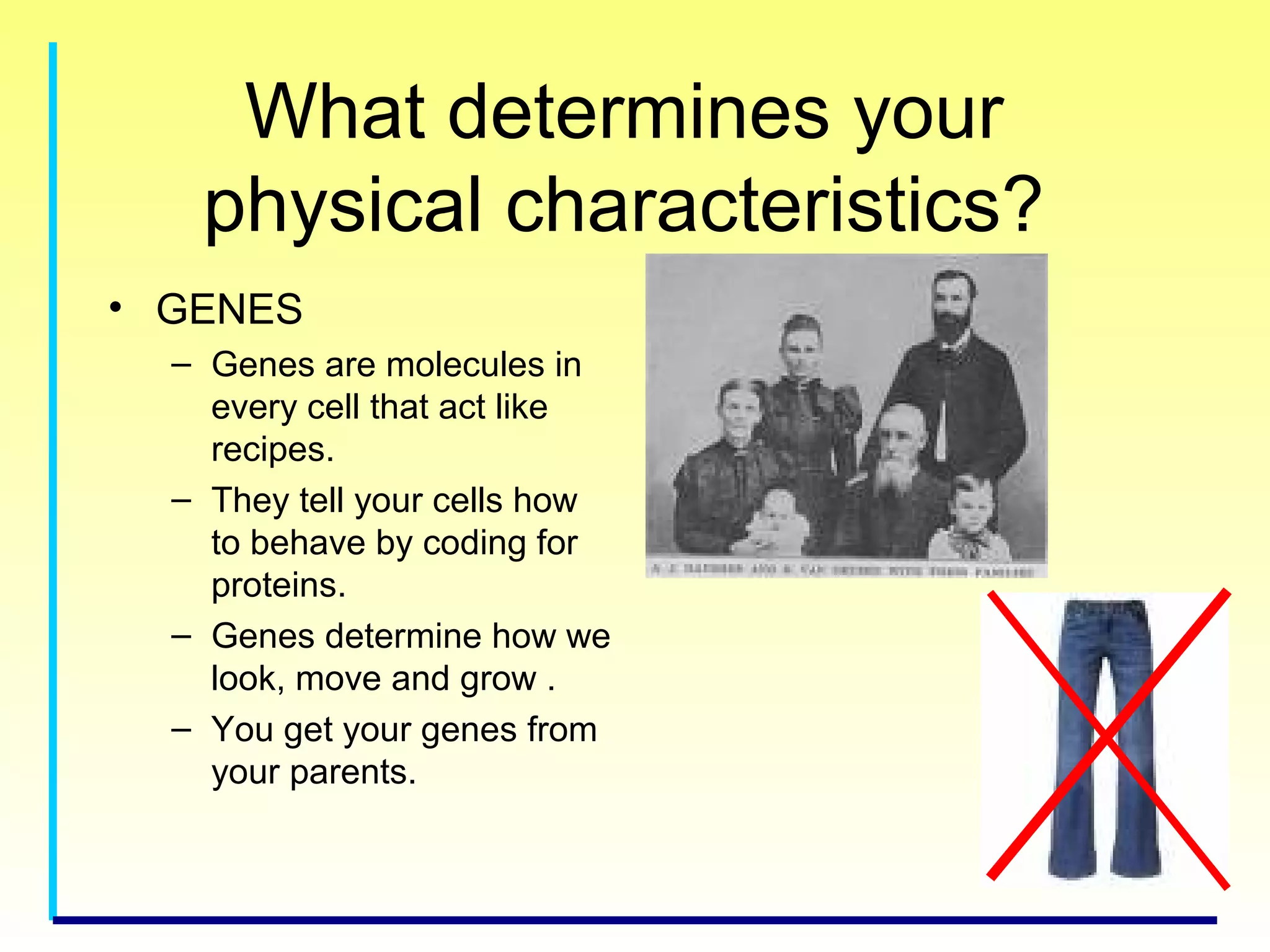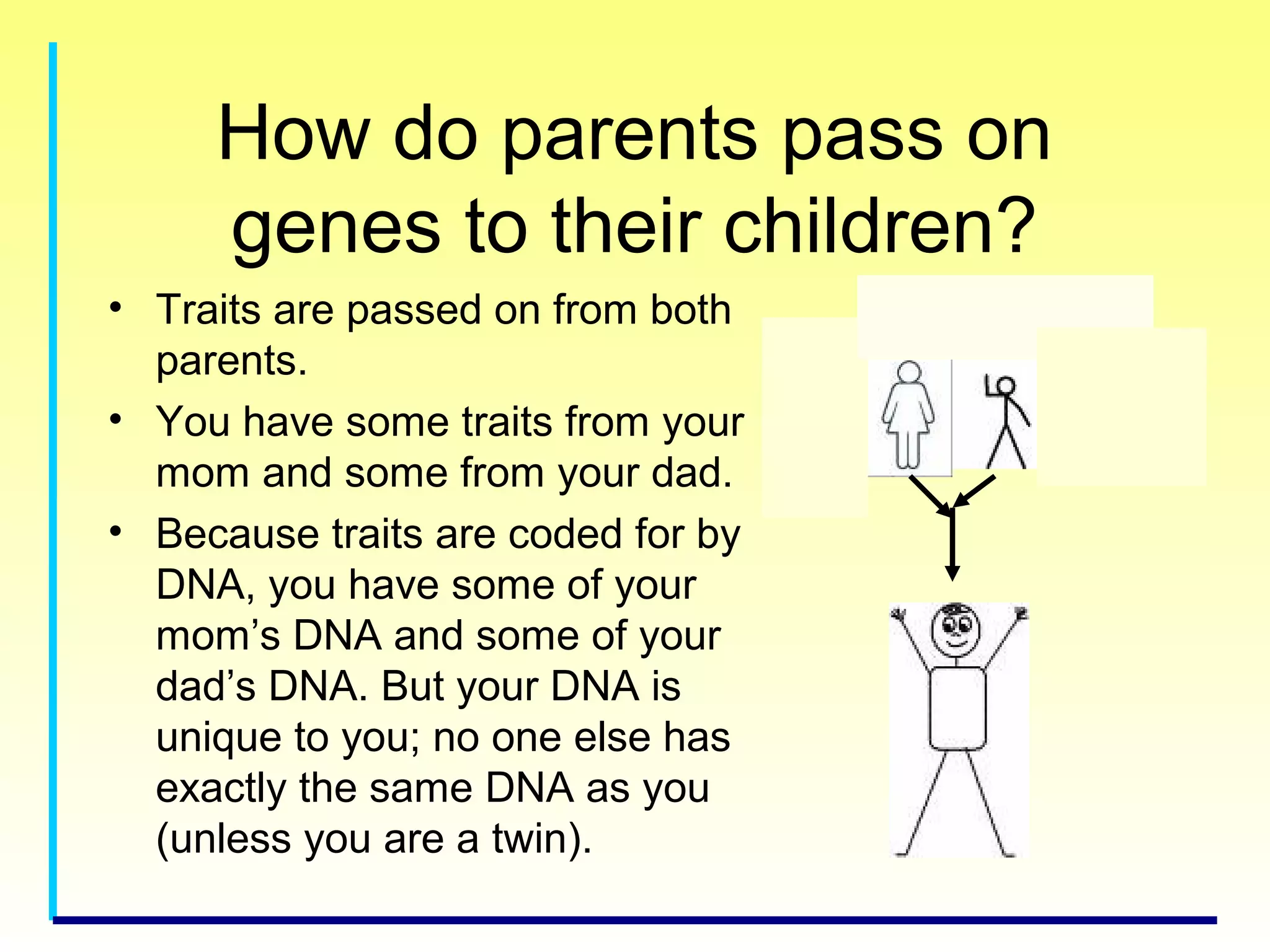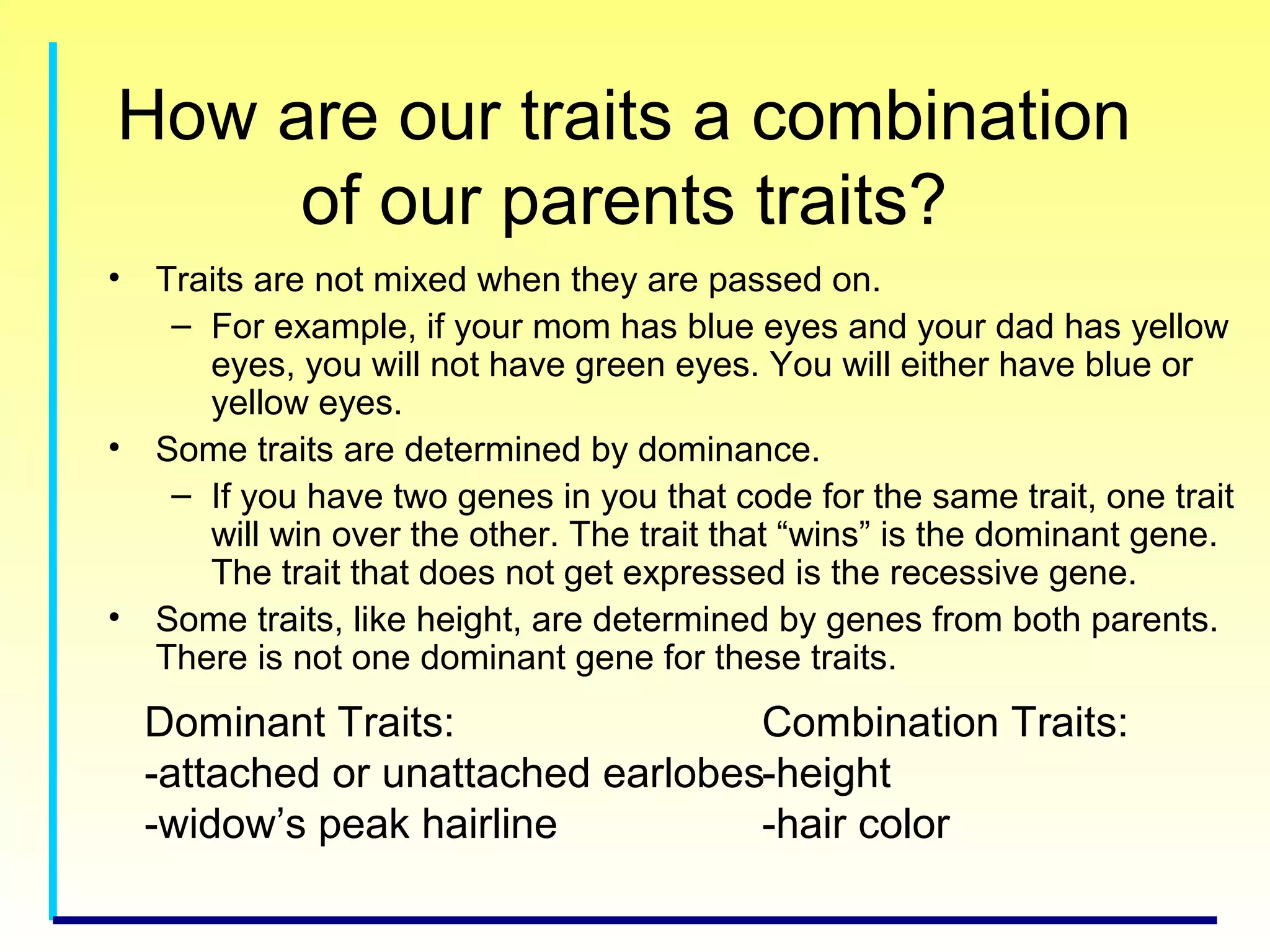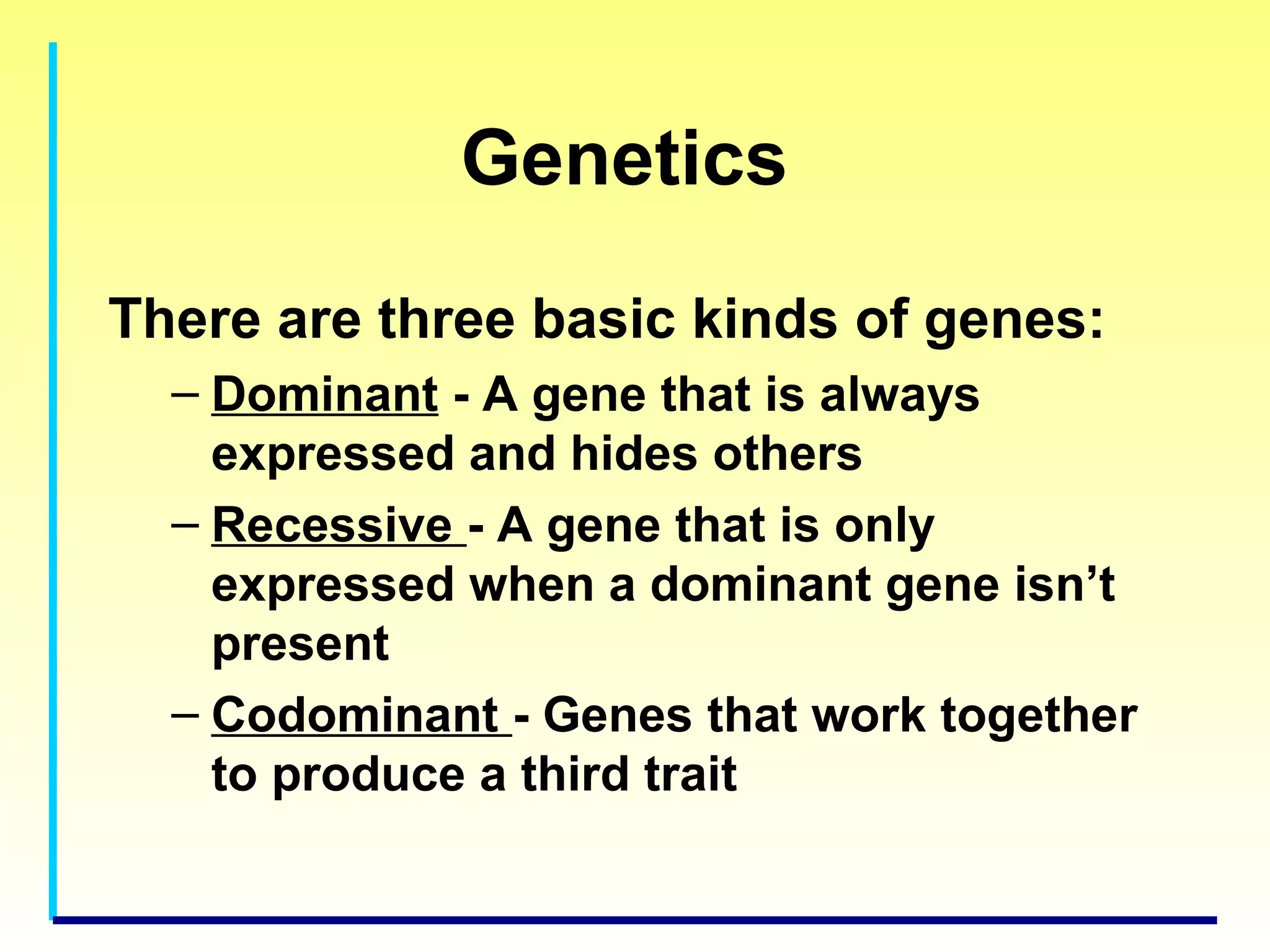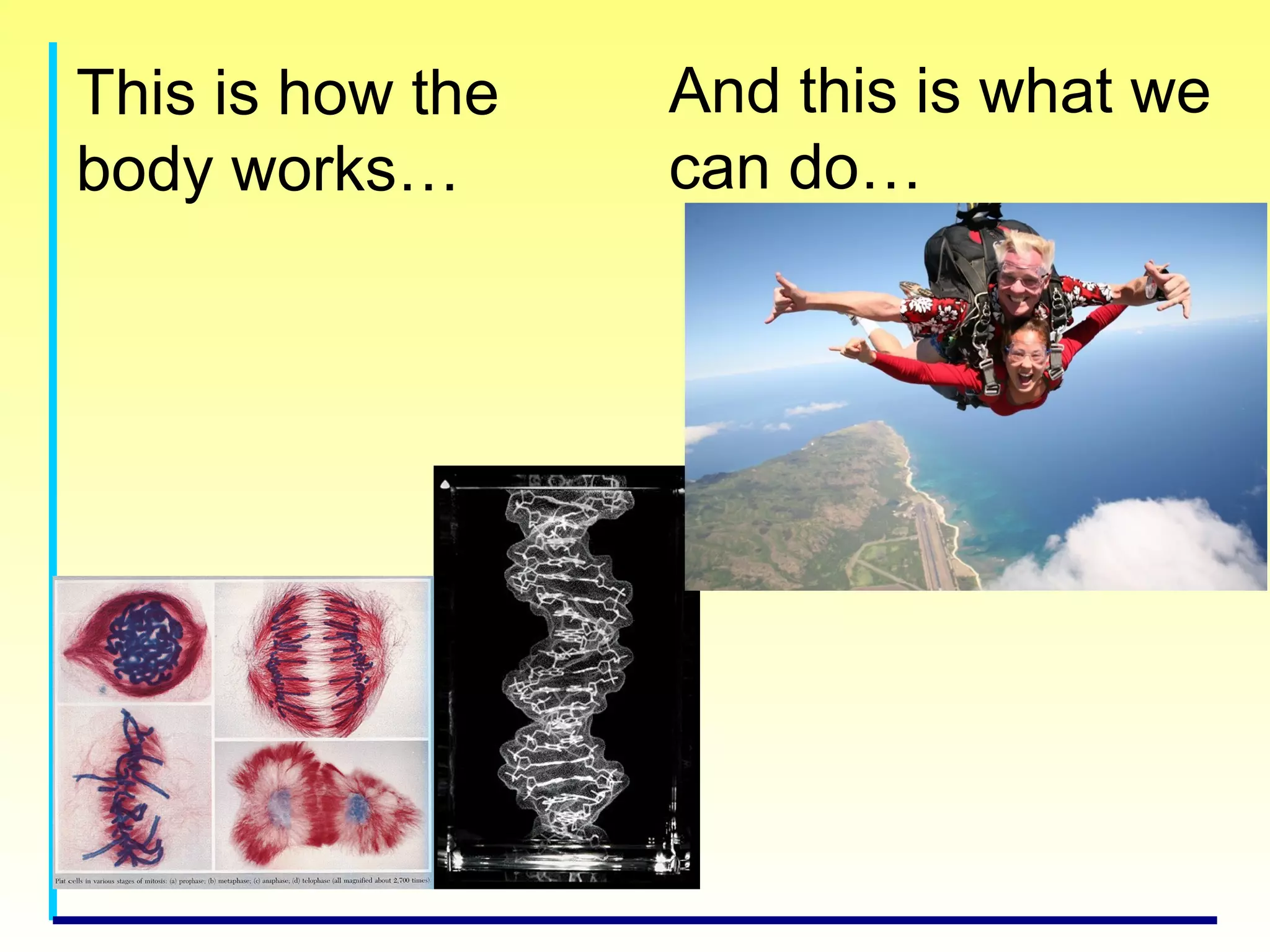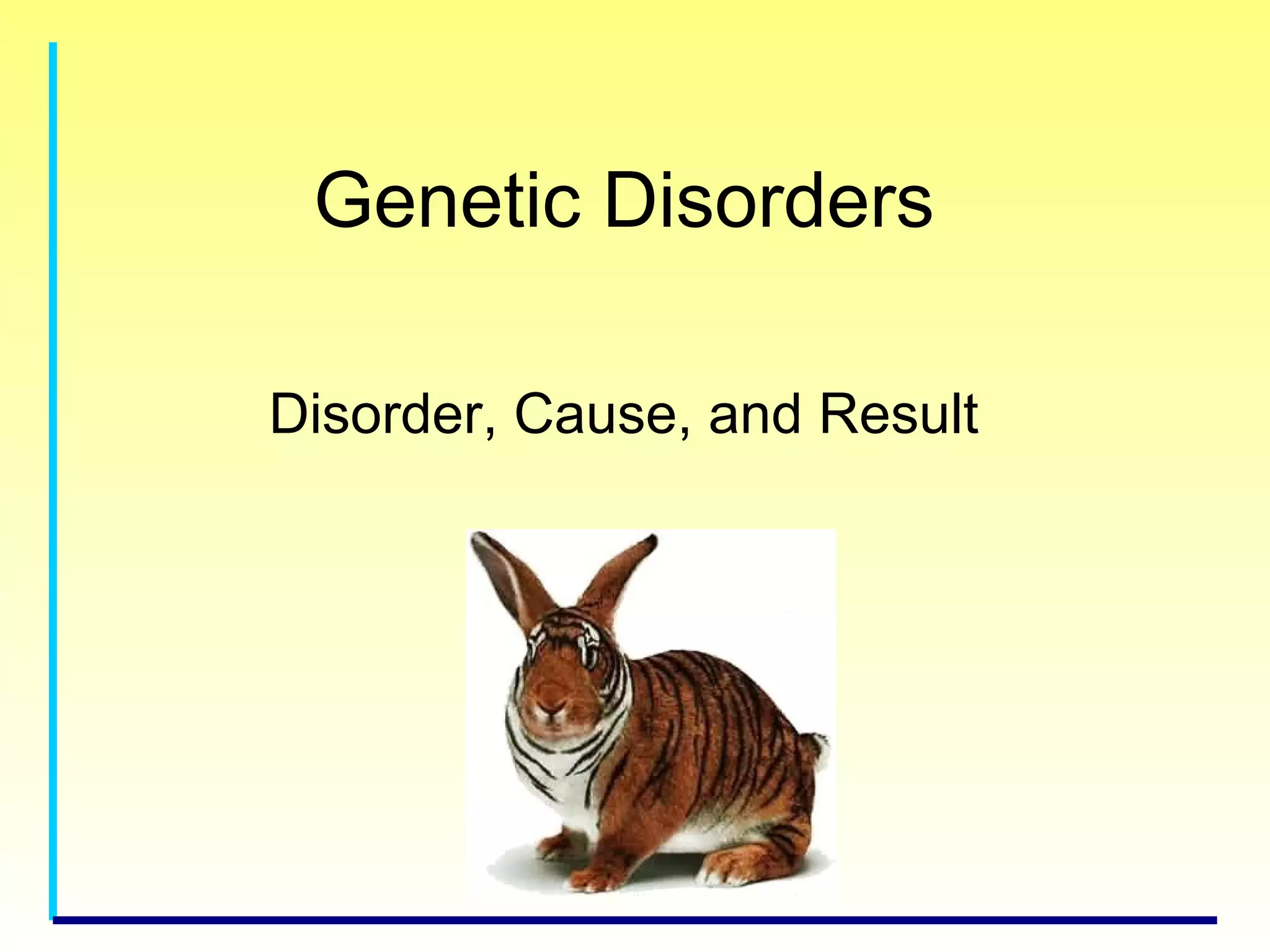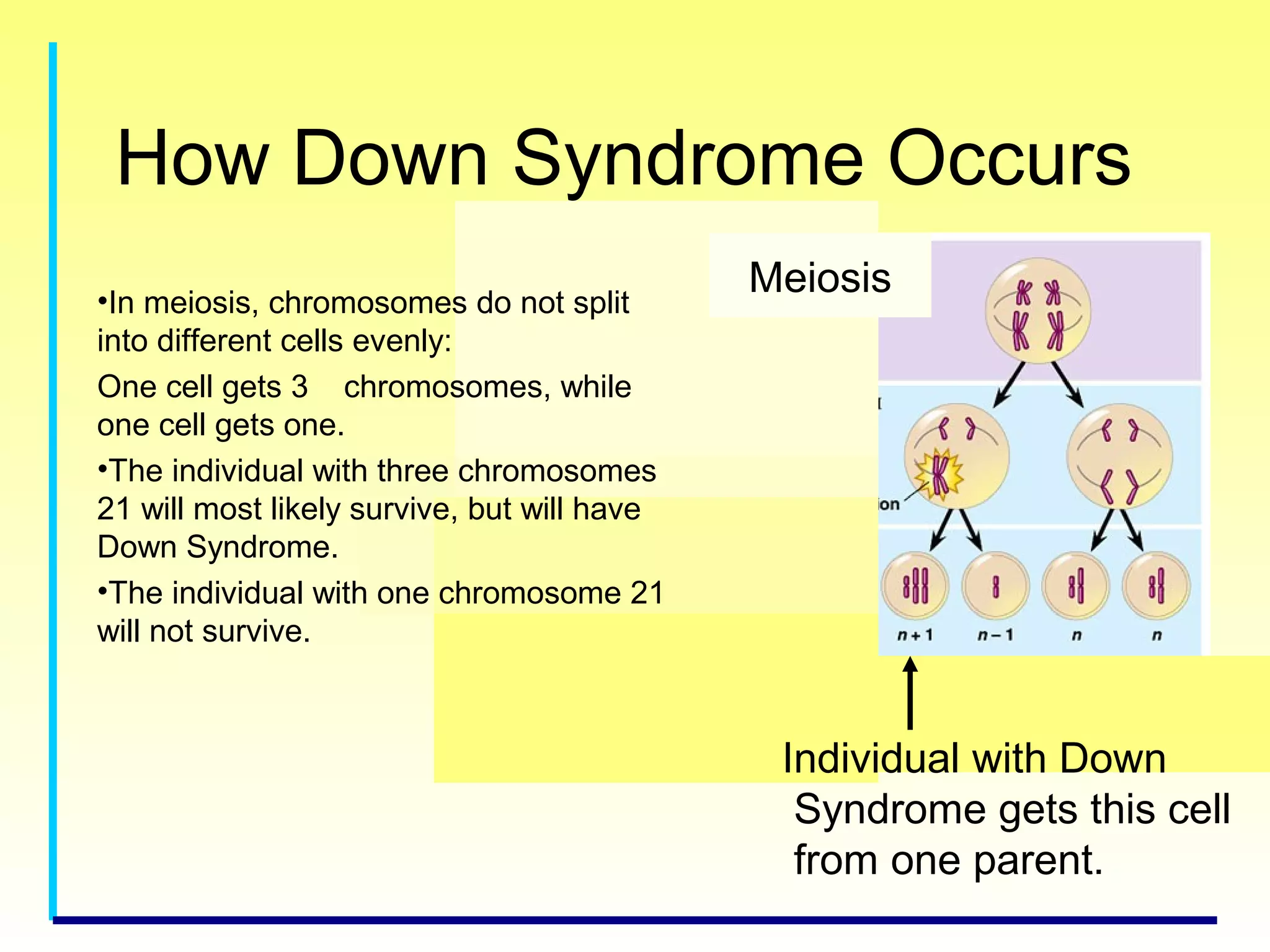The document discusses genes and DNA. It explains that DNA contains genes which act as recipes that determine traits. DNA is found in all cells and contains the genetic code for an organism. DNA replicates and is passed from parents to offspring. Genes determine traits like eye and hair color through dominant and recessive alleles. Genetic disorders occur due to mutations in genes. Examples given are sickle cell anemia, Down syndrome, and lactose intolerance.
